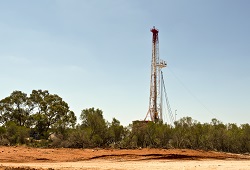New research on carbon dioxide storage in porous rocks
Geologic carbon storage techniques can play a big part in our efforts to limit the risks of global warming. The idea behind this technology is to capture the emitted CO2 before it enters the atmosphere, and then store it deep underground at high pressure, inside porous rocks. “Knowing how the pore structure evolves over time is critical to safely and effectively store carbon because this affects the sealing integrity, the ability to inject CO2 and the storage capacity at a geologic site,” points out Dr Yi Yang, the funded fellow of OMNICS (Observing, Modelling and Predicting in situ Petrophysical Parameter Evolution in a Geologic Carbon Storage System), a Marie Skłodowska-Curie Action project. Progress in the field relies on overcoming characterisation challenges and reducing the high computational costs of current modelling approaches. Studying the saturation mechanism OMNICS placed the emphasis on studying the reactions that take place between CO2, reservoir fluids and minerals in underground geological reservoirs. “Simply put, how fast a porous rock dissolves during exposure to a fluid depends its solubility and on how long it has been in contact with it. The longer the interaction between the solid and fluid components, the closer the fluid is to become saturated,” explains Dr Yang. Here, saturation refers to the amount of dissolved solid that is present in flowing fluid. This affects the fluid ability to carry rocks as solutes; if the value is high, it slows down the dissolution rate. As Dr Yang explains, after CO2 is pumped underground, the gas acidifies the water and dissolves minerals. The reactive fluid flows through the more permeable region and dissolves its minerals, making it even more permeable. The rich get richer This self-enhancement of the flow discharge leads to spontaneous fluid channelisation. The phenomenon is similar to the Mathew effect in sociology, where an economic inequality leads to “the rich-get-richer and the poor-get-poorer” mechanism. In this analogue, aqueous CO2 is the “fortune” and the inherent petrophysical and chemical heterogeneities in the natural porous materials are the inequalities. During this dynamic process, certain microstructural features ultimately determine the entire flow field of the fluid. Seeing through X-ray eyes The underlying mechanism of how this blend of acidic gas and water erode rock formations creates a new scenario of self-organisation in nature and sets the stage for OMNICS. “The idea is to generate realistic pictures of the evolution of rock microstructure, while CO2 rich water creates new flow channels,” notes Dr Yang. In the first stage, researchers built a sample vessel that mimics the conditions in a typical reservoir. The use of synchrotron X-ray computed tomography enabled researchers to observe microstructure evolution of natural porous media at very small scales. With the aid of computational fluid dynamics, the team could also trace what the pore surfaces “see” as the CO2 rich water travels through the pore architecture.. The use of a new reactor network model enabled researchers to study the development of flow networks in geological carbon storage. This helped them relate the network topological and statistical features to its capacity for “digesting” anthropogenic CO2. Yet, combining mathematical equations with the tomographic structure did not come without its challenges. A big one was to compensate for the great amount of information lost when it comes to segmenting greyscale data. “In our model, the greyscale intensities are used to parameterise each voxel as an individual reactor. Thus, the model preserves geometric information accessed by 3D imaging and modifies the governing equations to optimise the numerical simulations,” explains Dr Yang. The reactor network model can significantly reduces computational costs for predicting the evolution of porous structures over time. To date, OMNICS research has led to four peer-reviewed papers.
Keywords
OMNICS, porous, CO2, rock, reactor network model, carbon storage, X-ray computed nanotomography







